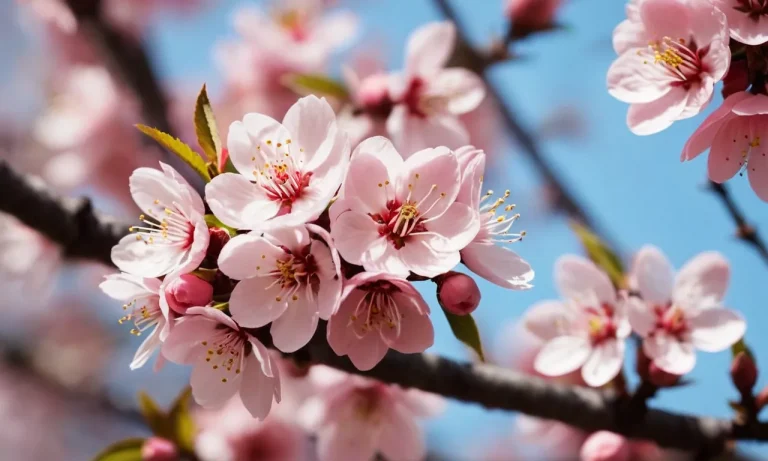The color white holds deep spiritual meaning in many cultures and traditions around the world. If you’re short on time, here’s a quick answer to what the color white spiritually symbolizes: purity, innocence, wholeness, and new beginnings.
In this comprehensive guide, we will explore the profound spiritual symbolism and meaning behind the color white. We’ll uncover why white is considered a sacred and holy color by many faiths and spiritual practices.
From its connection to light and transcendence to rituals using white objects, read on to understand the deeper spiritual dimensions of this luminous color.
The Color White Symbolizes Purity
Free from Sin or Blemish
In many cultures and traditions, the color white has long been associated with purity, innocence, and being free from the stains of sin or moral wrongdoing. To be as “white as snow” indicates a state of moral cleanliness and absence of blemish.
This connection between white and purity has resonated across faiths and regions. In Christianity, white clothes were worn at baptisms to represent the newly baptized person being cleansed of original sin.
In Islam, white clothing is encouraged during Hajj pilgrimages to Mecca, representing human equality and purity of intention before God. Even in ancient Greek and Roman times, white animals were sacrificed to the gods to request absolution and atonement.
The white lily flower has also been used for centuries as a symbol for restored innocence after death. So whether in rites of passage, sacred ceremonies, or funerary traditions, white has conveyed a sense of being washed clean of transgressions, faults, evil, or the dust and travelers of the world.
Connected to Virginity and Innocence
Beyond moral purity, the color white has also symbolized purity in a physical or developmental sense. The phrase “pure as the driven snow” conjures up images not only of absence of dirt but innocence of experience.
In many cultures, white has been associated with virginity. Brides traditionally wore white gowns on their wedding day as a public declaration of sexual purity. The white lily’s connection to innocence and humility made it a natural symbol of virgin saints like the Virgin Mary.
And Anglo-Saxon women accused of immodesty were compelled to prove their virginity by walking over white-hot plowshares (yikes! ).
Whiteness has also represented the innocence of childhood, untainted by the complexities, desires, and compromises of adult life. Images of children dressed in white and associating white with a “blank slate” both convey this idea of preparatory purity before life’s canvass is filled in.
So in body, mind, and spirit, the color white has signified a state of original simplicity waiting to manifest its full potential. It is the pillars of a Roman temple, yet uncarved. The light of dawn, unblemished by the travels of day. The nursery room, brimming with possibilities.
So let white remind us that purity means holding sacred that which is new, untouched, uncorrupted, and undefiled.
White Represents Wholeness and Completion
Fullness Without Need or Lack
In spiritual and mystical traditions, the color white is often seen as representing a state of wholeness, fullness, and completion. Where other colors may represent specific qualities or attributes, white contains all colors within itself and thus symbolizes a harmonious balance and integration of all aspects.
White light contains all the colors of the rainbow, representing the full spectrum of visible light. In a similar way, the color white spiritually indicates a sense of having everything already present within oneself without anything lacking.
There is no need to seek outwardly for fulfillment, as all has already been brought to fruition from within. This conveys a profound feeling of peace, wholeness, and completion from embracing all that one intrinsically is.
Balance and Harmony of All Aspects
The purity of white also evokes a clarity of mind and spirit, promoting harmony between different facets of one’s being. Where other colors highlight specific moods or qualities, white contains them all in perfect equilibrium and poise.
This makes it an apt representation of spiritual enlightenment or awakening, in which all aspects come together as a unified whole.
White clothes are often worn by spiritual teachers and practiced in certain meditation traditions to signify having attained a state of inner balance and awakening. The color seems to resonate at a core level with the profound stillness and lucidity accompanying the realization of one’s true nature beyond all dualities and passing phenomena.
This association of white with balance and harmony is also why white animals like the swan or dove can serve as spiritual messengers, or why white flowers and plants are used decoratively to enhance meditation spaces.
Visually, white spaces allow the focus to turn inward, supporting tranquility and centering of one’s energy.
Ultimately, white reflects and evokes the clear inner light of consciousness shining in and through all forms and arising from the still depths of being. Recognizing this intrinsic wholeness and completions allows one to flow through life with greater ease, harmony and wisdom – perfectly at peace with all that arises.
The color white in this way functions as a visual reminder and affirmation of one’s true spiritual identity.
The Color White is Linked to New Beginnings
Transition Points Like Birth and Marriage
The color white is strongly associated with new beginnings in life, representing a clean slate and a fresh start. This symbolism is especially prevalent around major transition points like birth and marriage.
White is used extensively to celebrate the arrival of a new baby, who is dressed head-to-toe in white during christening ceremonies. The bright whiteness reflects the innocent potential of the child, yet to be colored by experiences.
Baby showers also incorporate white decorations to represent the opportunity for mothers and fathers to nurture a young life.
In many cultures, brides wear white dresses on their wedding day to convey the start of a new chapter. While white symbolizes purity in some traditions, in others it offers a blank canvas to paint the colors of married life.
According to surveys, over 75% of modern brides opt for a white dress even if they have children or have been married before, renewing the concept of rebirth.
The Dawning Light of Potentiality
As the color of sunlight and daylight, white is intrinsically linked to the break of dawn. It embodies the stirring of creativity with each new sunrise, waiting to manifest in the dreams and ambitions of humanity.
This meaning is captured in poetic expressions like “blank page” and “tabula rasa” that use emptiness and lightness to convey promise.
In the ancient world, white animals were sacred to goddesses of the hunt and moon, representing the life-giving force of nature. Today, white spaces and clothing are used strategically in visual arts, film, and marketing to denote relief from darkness or inspire the realm of possibilities. They remind us of the virgin luminosity where thoughts originate and stand out from the jadedness of routine.
White in nature also shares connotations of hope and renewal, whether in the snowdrops of spring, white buffalo calves in Native American culture or white storks delivering newborns. Their whites blend into the blankness of an open future story.
White Corresponds to Higher Realms and Divinity
Connected to Heaven, Angels and God
The color white has long been associated with higher realms, including heaven, angels, and God. In many cultures and spiritual traditions, white represents purity, divinity, innocence, and transcendence. Wearing white clothes or robes can symbolize a connection to the divine or a spiritual awakening.
In Christianity, God and the angels are often depicted as clothed in white robes, representing their divine nature. Jesus is also portrayed wearing white on several occasions, such as during the Transfiguration when his clothes became “dazzling white” (Mark 9:3).
This symbolized his divine glory and connection with God.
In Islam, pilgrims wear simple white garments called ihram during Hajj to represent spiritual purity, equality, and unity before God. White is also one of the symbolic colors of prophets and spiritual leaders in Islam.
Across Eastern traditions like Hinduism and Buddhism as well, white symbolizes the highest spiritual aspirations, enlightenment, and the infinity of Brahman or ultimate reality. White clothes are worn by Hindu swamis, Buddhist monks, and Sikhs during important spiritual rituals.
Symbols Like Halos and White Robes
One of the most ubiquitous uses of white as a spiritual symbol is in the halo, the glowing orb or ring of light around holy figures’ heads in sacred art and paintings.
- Halos represent the radiant purity and divine wisdom of saints, prophets, gods, and God.
- They first appeared in ancient Greco-Roman art, were adopted by early Christians, and persist today in representing spiritual enlightenment or closeness to the divine light.
Relatedly, the glowing white robe is another enduring visual motif.
- White robes represent spiritual achievement, transcendence of earthly forms, and oneness with universal energies across traditions.
- In the Judeo-Christian tradition, angels, saints, the righteous dead, and figures like Moses and Elijah often wear dazzling white robes in sacred art and literature.
So whether looking at a classical painting of Buddha with a glowing halo or the Virgin Mary in glowing robes, white has been consistently used across history, geography, and faiths to represent the most enlightened, pure, and exalted spiritual states.
It visually symbolizes supreme wisdom, divinity, and transcendence.
Using White in Spiritual Rituals and Ceremonies
White Candles, Stones, Flowers and Clothing
White is widely used in spiritual rituals and ceremonies to represent purity, healing, and renewal. Popular white ritual items include candles, stones, flowers, and clothing.
White candles hold deep symbolic meaning in many spiritual traditions. Lighting a white candle is thought to attract positive energy and pave the way for cleansing, clarity, and focus during meditation, prayer, or ritual.
White candles may be used to connect with spirit guides, honor ancestors, manifest goals, or meditate on specific themes like love, peace, or healing.
Crystals and stones like moonstone, white jade, and clear quartz radiate calming and healing vibrations. Placing white stones in sacred spaces or using them during rituals can amplify intentions set forth.
White flowers like daisies, baby’s breath, and white roses adorn altars and ceremony spaces to signal rebirth, innocence, and purity of heart.
Donning white clothing or robes signals entering a sacred mindset and leaving behind the outside world. In rituals like baptisms, white garments represent the fresh start offered ahead for spiritual growth.
In Eastern traditions, white clothes worn by monks and nuns detach them from worldly concerns to better connect with the divine. The symbolism crosses many faiths.
Purification, Healing, and Renewal
White holds enduring significance in rituals of purification, healing, and personal renewal across spiritual traditions.
- In Native American rituals, burning white sage is thought to cleanse spaces and auras of bad energy or spirits.
- In the East, Hindu and Buddhist monks wear white robes to manifest qualities like purity, simplicity, and detachment.
- In Christianity, white baptism garments represent purification and new beginnings in the eyes of God.
Beyond faith practices, white signals hope and limitless potential – a blank slate from which to manifest dreams. When feeling stuck, visualizing white light entering the body can metaphorically represent relief and inspiration gained in darkness.
Overall, white’s cleansing and enlightening properties make it a versatile tool for rituals facilitating spiritual growth.
Conclusion
As we have seen, the color white radiates deep spiritual meaning and symbolism across cultures and faith traditions. It represents light, transcendence, purity and innocence. White corresponds to wholeness, new beginnings and transitions, as well as higher realms of divinity and enlightenment.
Many rituals and ceremonies incorporate white objects or clothing to signify cleansing, healing, renewal and connection with the divine or one’s highest self.






